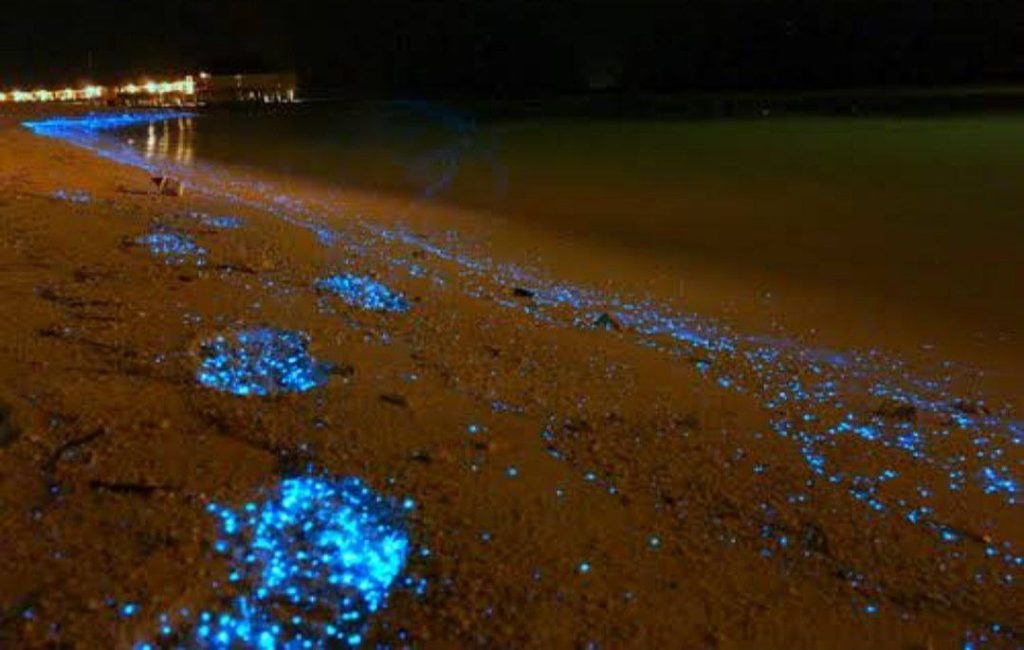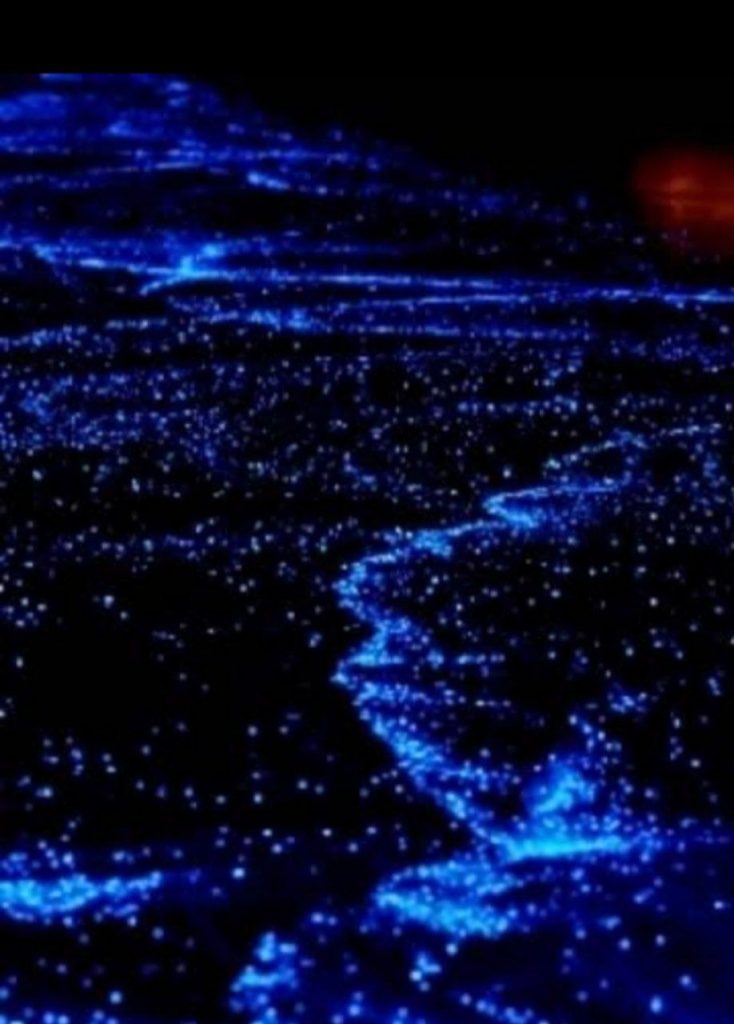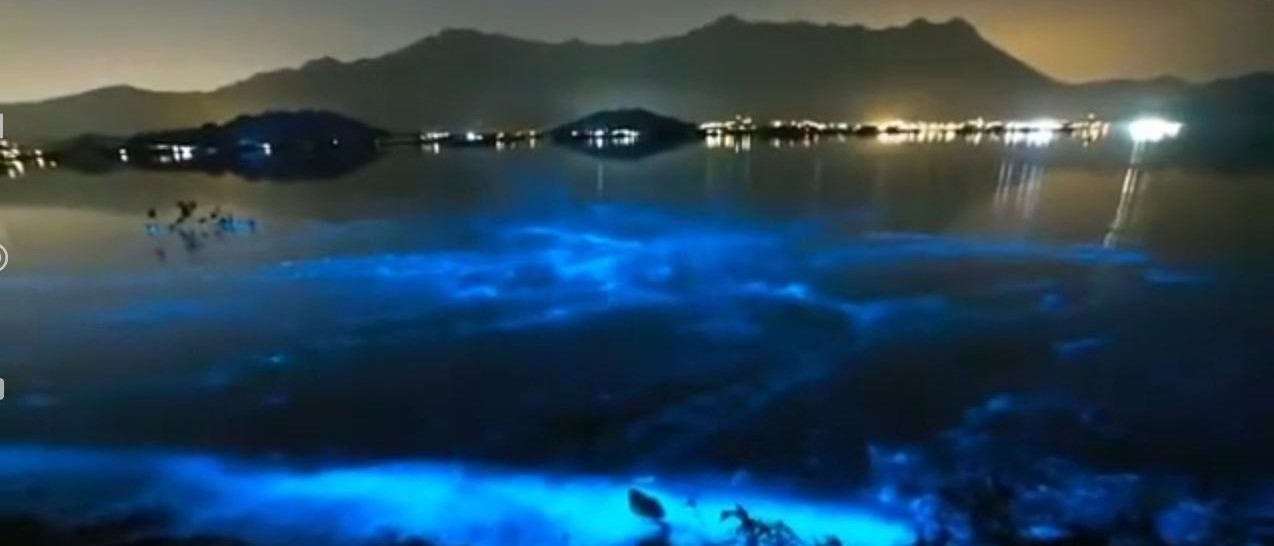The Magical Sea of Stars in the Maldives: Nature’s Nightlight


The Maldives offers a rare natural wonder that feels like stepping into a dream—the Sea of Stars. This bioluminescent phenomenon lights up the shores at night with glowing blue waves that look like a galaxy has spilled into the sea. If you’re searching for something extraordinary, this celestial sight is one of the most unforgettable experiences in the Maldives.
In this guide, we’ll explore the science, beauty, and best places to witness the Sea of Stars in the Maldives—and how you can make the most of this enchanting encounter.
What Is the Sea of Stars?
A Natural Bioluminescent Wonder
The Sea of Stars is a mesmerizing nighttime display caused by tiny bioluminescent plankton, called dinoflagellates, that glow when disturbed by waves, movement, or touch. The result? A shore that sparkles like stardust every time a wave crashes or your feet skim the water.
The Science Behind the Glow
This glow comes from a natural process called bioluminescence—when living organisms produce light through chemical reactions. Dinoflagellates contain light-emitting compounds in their cells that activate when stimulated, especially by motion in the water. This creates a glowing effect that’s most visible in calm, dark conditions.
Why It’s So Special in the Maldives
While bioluminescent beaches can be found in a few places worldwide, the Maldives Sea of Stars is especially vivid and consistent. That’s thanks to the region’s pristine waters, warm temperatures, and the unique species of plankton found here. Unlike short-lived flashes in other regions, Maldivian waters often produce stronger, longer-lasting displays—sometimes lasting several nights in a row.
Best Places to See the Sea of Stars in the Maldives
Vaadhoo Island – The Iconic Bioluminescent Beach
The most famous place to see the Sea of Stars is Vaadhoo Island, located in the Raa Atoll. The island’s shoreline has gained international attention for its stunning night-time displays of glowing waves. Tourists flock here between June and December—especially during the new moon phase—when visibility is at its peak.
Other Bioluminescent Beaches in the Maldives
While Vaadhoo is the star, other islands across the Maldives occasionally display bioluminescence too, including:
- Mudhdhoo Island (Baa Atoll)
- Fonimagoodhoo (Baa Atoll)
- Thoddoo (Alif Alif Atoll)
Because the phenomenon is natural and unpredictable, it’s best to ask local guides or resort staff for updated info on when and where to see the Sea of Stars during your trip.
Best Times to Experience the Sea of Stars
You can witness the Sea of Stars in the Maldives year-round, but certain times offer better visibility. The best periods are April to June and September to November, when the weather is dry, the skies are clear, and the sea is relatively calm. For optimal viewing, aim for moonless nights or the new moon phase, which enhances the visibility of bioluminescence against the dark backdrop.

Experiencing the Sea of Stars
Guided Nighttime Excursions
One of the best ways to experience the Sea of Stars in the Maldives is through a guided nighttime tour. Resorts and local tour operators offer these excursions, allowing guests to explore the glowing shores safely and insightfully. Expert guides provide background on the phenomenon while leading you to the best viewing spots—making the experience both educational and awe-inspiring.
Swimming with the Stars: Snorkeling and Diving
For a truly immersive encounter, try snorkeling or diving in bioluminescent waters. Swimming among glowing plankton is a surreal experience—each movement lights up the water around you. It feels like drifting through a glowing galaxy beneath the surface, a unique adventure that few places in the world can offer.
Photography Tips to Capture the Magic
Photographing the Sea of Stars can be tricky but rewarding. To capture the best shots:
- Use a tripodto stabilize your camera.
- Set a long exposure timeto gather more light.
- Adjust the ISOfor clarity without too much grain.
- Avoid using flash, which can ruin the natural glow and disturb marine life.
- Be patient and take multiple shots to find the perfect moment.
Conservation Efforts and Sustainability
Preserving the Sea of Stars
As tourism increases, protecting the delicate ecosystems responsible for the Sea of Stars becomes vital. The bioluminescent dinoflagellates and the surrounding marine environment are sensitive to pollution and disruption. Local conservation groups and government bodies are working to preserve this wonder through awareness campaigns and protective measures.
Responsible Tourism and Eco-Friendly Practices
When visiting, follow eco-friendly tourism practices. Avoid disturbing the water or touching marine life. Choose tour operators and accommodations that follow sustainable practices, such as minimizing waste and supporting reef conservation. Reducing plastic use and respecting local guidelines goes a long way in preserving this fragile phenomenon.
Community Involvement and Conservation Programs
Local communities and non-profits in the Maldives play a crucial role in marine conservation. Many initiatives educate both locals and tourists about preserving marine biodiversity and minimizing human impact. By supporting these programs, travelers can help ensure the Sea of Stars remains for future generations to enjoy.
Preserving the Sea of Stars
As tourism increases, protecting the delicate ecosystems responsible for the Sea of Stars becomes vital. The bioluminescent dinoflagellates and the surrounding marine environment are sensitive to pollution and disruption. Local conservation groups and government bodies are working to preserve this wonder through awareness campaigns and protective measures.
Responsible Tourism and Eco-Friendly Practices
When visiting, follow eco-friendly tourism practices. Avoid disturbing the water or touching marine life. Choose tour operators and accommodations that follow sustainable practices, such as minimizing waste and supporting reef conservation. Reducing plastic use and respecting local guidelines goes a long way in preserving this fragile phenomenon.
Community Involvement and Conservation Programs
Local communities and non-profits in the Maldives play a crucial role in marine conservation. Many initiatives educate both locals and tourists about preserving marine biodiversity and minimizing human impact. By supporting these programs, travelers can help ensure the Sea of Stars remains for future generations to enjoy.
FAQ
What causes the Sea of Stars phenomenon?
The Sea of Stars is caused by bioluminescent plankton known as dinoflagellates. These tiny organisms emit a blue glow when disturbed by movement in the water, creating a shimmering star-like effect along the shore.
Can I swim in the Sea of Stars?
Yes! Swimming, snorkeling, or diving in the Sea of Stars is a popular activity. It offers a unique, glowing experience, but always follow safety guidelines and respect marine life.
When is the best time to visit the Maldives to witness the Sea of Stars?
While the phenomenon can occur year-round, the best times are April to June and September to November, when the sea is calm and skies are clear—especially on moonless nights.
Are there any safety precautions to consider?
Yes. Avoid swimming in areas with strong currents, wear proper gear, and always follow your guide’s instructions. Use reef-safe sunscreen and avoid disturbing the water unnecessarily.
Can the Sea of Stars be seen from any island?
The phenomenon is visible in multiple locations, but some islands are more renowned, including:
- Vaadhoo Island
- Mudhdhoo Island
- Fesdu Island
- Hanifaru Bay
Check with local guides for real-time sightings.
Can I capture the Sea of Stars with my camera?
Yes, but it requires technique. Use a tripod, a long exposure, and adjust ISO settings. Avoid flash and be patient—great shots take time. Cameras with manual settings work best for low-light photography.